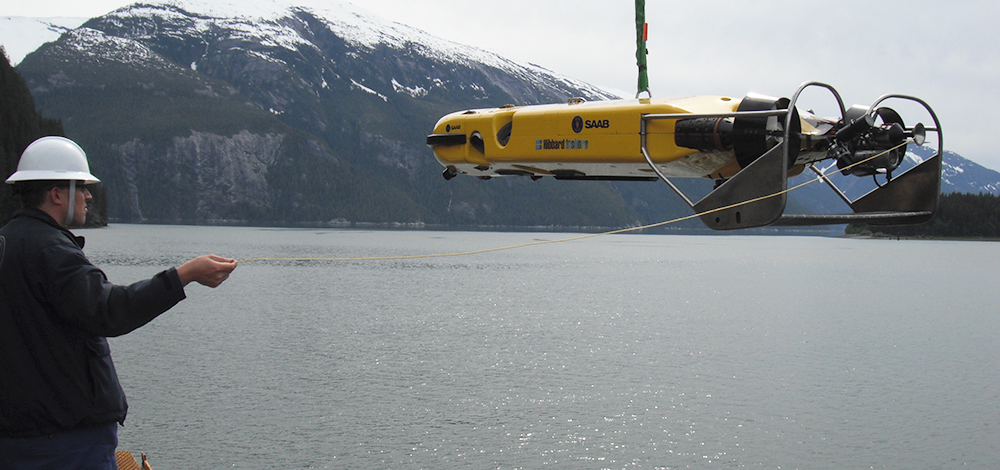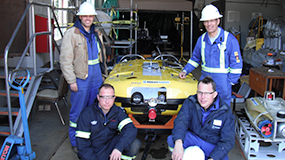Inspection of a 16 Kilometer Large Diameter Intake Tunnel in Flow
Hibbard Inshore coordinated with Saab Underwater Systems to engineer a custom AUV/ROV to inspect a large diameter, 16 kilometer long tunnel in zero/limited visibility conditions. The unique aspect of this job is that while the flow in the tunnel could be slowed for a period of time, due to demand, the flow could not be stopped for this inspection. Because of the tunnel’s length, it had never been fully inspected after its commissioning prior to this project.

The purpose of the inspection was to detect and document the location of debris, detect any anomalies and give the engineer data to help determine the structural condition of the tunnel. It was determined that, for the inspection, the client would have to slow the tunnel’s flow but would not have to stop the flow which would have critically affected their production. However, even with the ability to keep the tunnel flowing at a slower rate, this lower flow condition could not be maintained for very long, and as a result, the inspection had to be completed as quickly as possible while gathering pertinent data.
Due to the strict requirements of the project, Hibbard designed the inspection process to minimize outage time while maintaining the safety of the tunnel and the vehicle. A small ROV was used to aid the entry of the larger AUV/ROV hybrid into the tunnel, and a Launch and Recovery System (LARS) was designed to deploy the larger vehicle through the head gate slot while minimizing friction between the tether and the tunnel crown.
The hybrid AUV/ROV was equipped with three video cameras, a BlueView 2D multibeam sonar unit and two Imagenex sonar units to ensure the completion of the inspection during the allotted time for inspection. The Imagenex sonar provided cross section data of the tunnel while the BlueView system gave Hibbard Inshore imaging and measurement of features in front of the vehicle while the vehicle was moving at full speed. The fast update rate of the BlueView allowed the vehicle to move quickly without missing any sediment buildup or dimensional anomalies.

The combination of the two sonar systems ensured that hazards in the tunnel would be missed by the inspection despite travelling at full speed. Throughout the inspection, battery life and the ROV’s safety were monitored to ensure there would not be any issue with retrieval. Through carefully managing battery life, selecting proper sensors to identify features of interest as well as hazards, and mitigating dangers, Hibbard Inshore thoroughly inspected the available portion of the 16km tunnel and met the customer’s strict needs for minimum generation.

